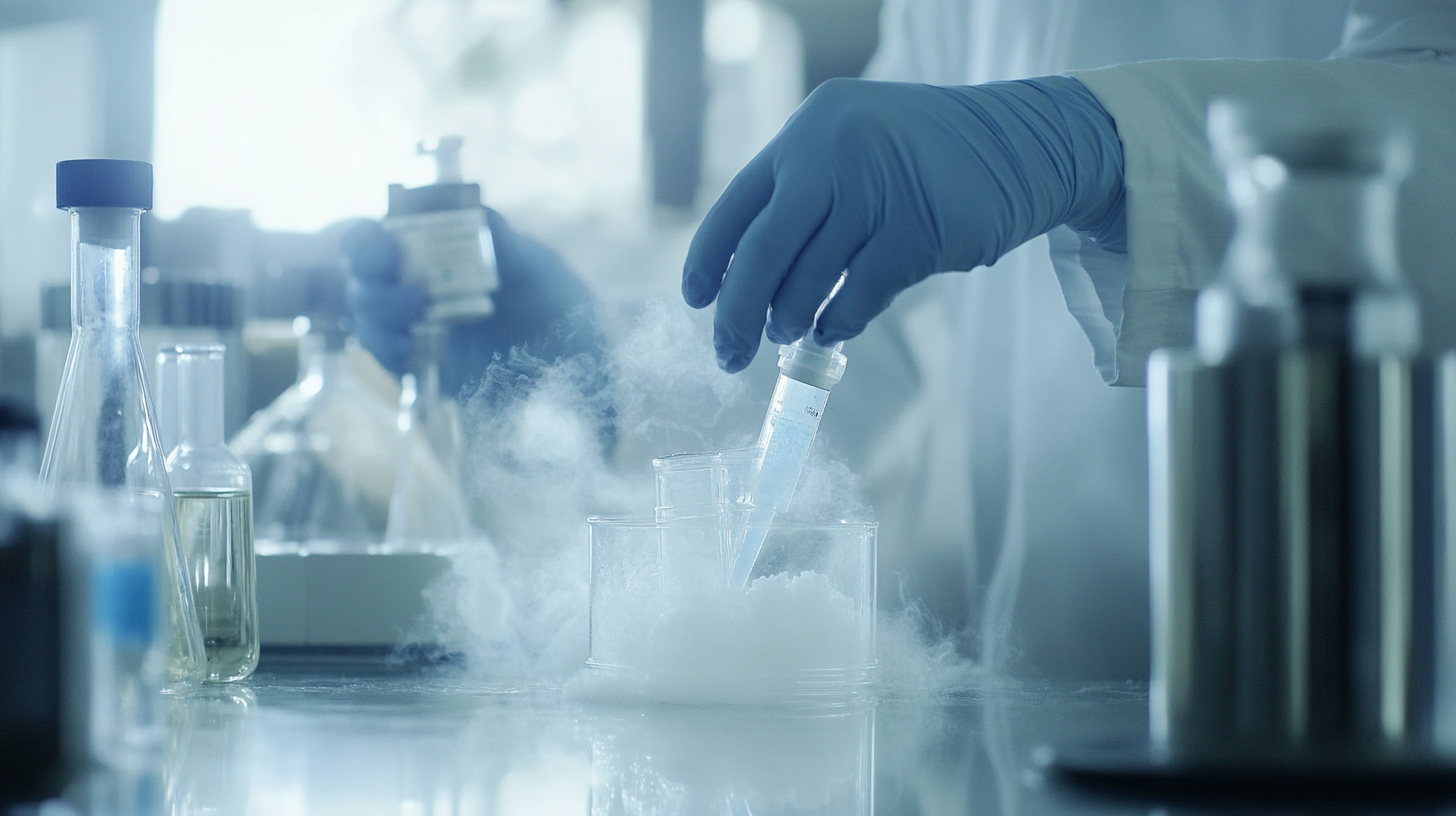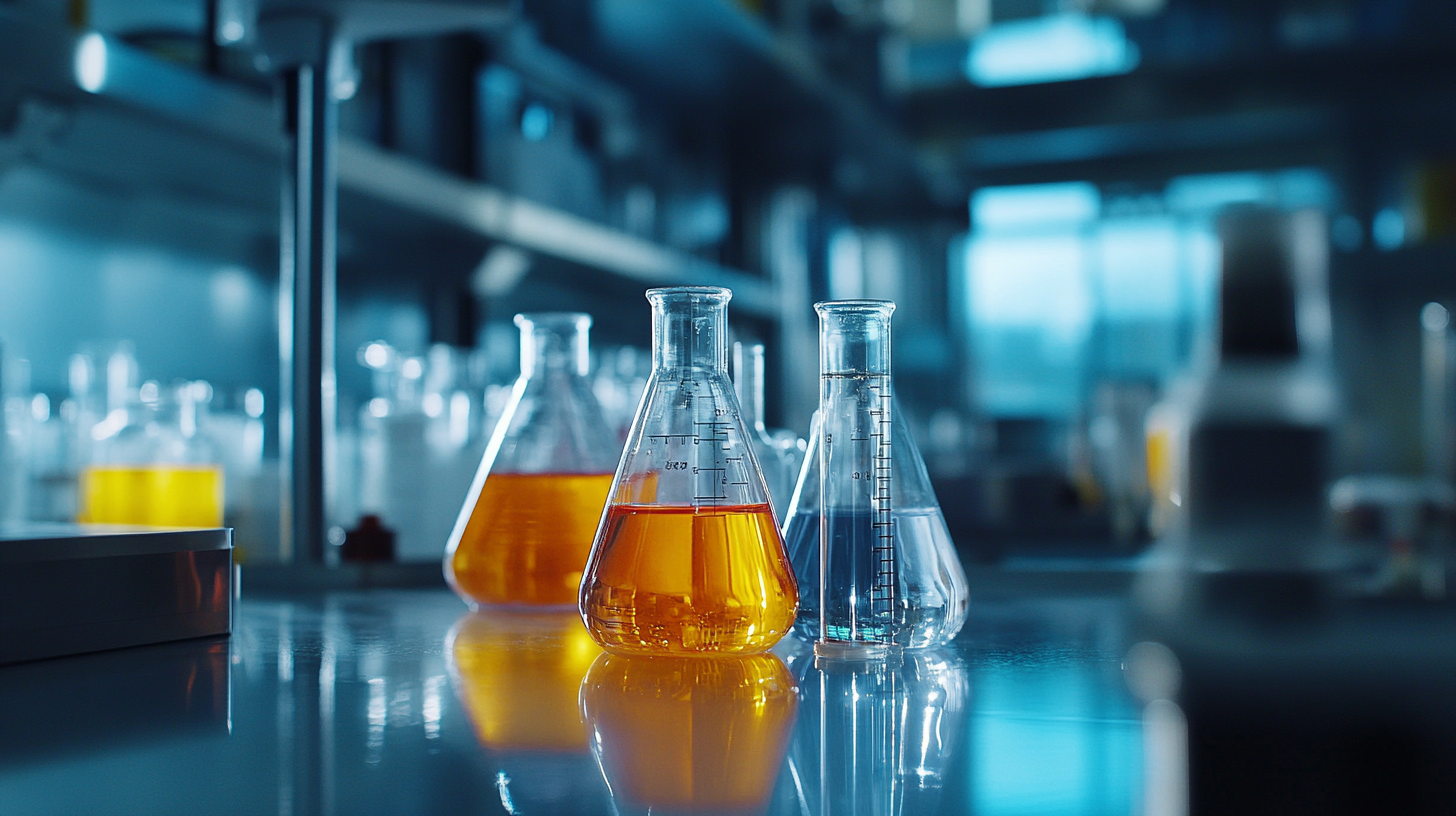In the rapidly evolving landscape of pharmaceuticals, understanding the intricacies of Active Pharmaceutical Ingredients (APIs) has become paramount for global buyers. As the backbone of any pharmaceutical formulation, APIs determine the efficacy, safety, and overall quality of medications. With the increasing demand for innovative therapies and the globalization of supply chains, navigating the complexities associated with sourcing and managing APIs can be a daunting task. This blog delves into seven essential insights that every global buyer should consider when working with APIs to ensure compliance, streamline procurement processes, and enhance product development.
Moreover, as regulatory standards and market dynamics shift, staying informed about the latest trends and challenges related to Active Pharmaceutical Ingredients is crucial. From recognizing the significance of quality assurance to understanding the impact of geopolitical factors, these insights will equip buyers with the knowledge needed to make informed decisions. The following sections will explore these critical aspects in detail, empowering global buyers to optimize their strategies and contribute to the advancement of healthcare solutions worldwide.

Understanding the global market dynamics of Active Pharmaceutical Ingredients (APIs) is crucial for buyers navigating an increasingly complex landscape. According to a recent report by IQVIA, the global API market is projected to reach $245 billion by 2026, growing at a compound annual growth rate (CAGR) of 6% from 2021. This growth is driven by rising pharmaceutical demand, innovative drug development, and increasing globalization of the supply chain. Key regions such as North America and Asia-Pacific are expected to dominate, reflecting a shift in manufacturing and sourcing strategies as companies seek cost-effective solutions and regulatory compliance. One of the most significant trends in the API market is the rising emphasis on quality and regulatory standards. The FDA and EMA continue to tighten regulations, ensuring that APIs meet stringent quality benchmarks which directly impacts sourcing decisions for global buyers. According to a report by Grand View Research, over 60% of pharmaceutical companies are prioritizing supplier quality audits and compliance checks, highlighting the rising importance of relationships with certified manufacturers. As firms increasingly focus on sustainability, over 30% of API suppliers are investing in green chemistry practices, further influencing market dynamics. Moreover, the COVID-19 pandemic has underscored the vulnerabilities within the global pharmaceutical supply chain. A survey conducted by Deloitte found that 39% of companies have reconsidered their sourcing strategies, emphasizing local sourcing to mitigate risks associated with geopolitical tensions and natural disasters. As market dynamics continue to evolve, buyers must stay informed about these shifts to secure reliable access to high-quality APIs and mitigate supply chain disruptions.

The global trade of Active Pharmaceutical Ingredients (APIs) is heavily influenced by various regulatory standards that different regions impose to ensure safety, efficacy, and quality. Understanding these standards is crucial for global buyers who seek to navigate the complexities of this marketplace. Each country or region has its own regulations, such as the FDA in the United States, the EMA in Europe, and the PMDA in Japan, which dictate the quality and compliance expectations for APIs. Familiarity with these varying requirements can significantly affect a buyer’s decision-making process, impacting everything from sourcing and manufacturing to distribution.
Regulatory bodies constantly update their frameworks to address emerging challenges, such as the need for improved transparency and traceability in supply chains. For instance, the introduction of initiatives like the Drug Supply Chain Security Act in the U.S. requires companies to maintain comprehensive records of their supply chains. This pushes suppliers and manufacturers to adopt advanced tracking technologies and robust quality assurance processes. Buyers must not only comply with existing regulations but also stay proactive in understanding impending changes that could influence their sourcing strategies.
Moreover, international harmonization efforts, such as those spearheaded by the International Council for Harmonisation (ICH), aim to align regulatory requirements across borders. This is crucial for fostering smoother trade flows and reducing barriers to entry for API manufacturers. By keeping abreast of these harmonization trends, global buyers can better assess opportunities in new markets while remaining compliant with regulatory demands. Ultimately, a thorough grasp of key regulatory standards is vital for global buyers to ensure that their pharmaceutical products meet both market demands and legal requirements worldwide.

In the ever-evolving landscape of pharmaceutical manufacturing, the delicate balance between quality and cost efficiency has emerged as a critical focal point for global buyers of Active Pharmaceutical Ingredients (APIs). Recent trends indicate a growing demand for high-quality APIs that not only meet regulatory standards but also enhance patient safety and therapeutic efficacy. This shift is partially driven by increasing scrutiny from regulatory bodies, which necessitates that manufacturers adhere to stringent quality control measures throughout the production process.
At the same time, the pressure to lower production costs has never been higher. Pharmaceutical companies are seeking to streamline their supply chains and adopt innovative technologies that can reduce manufacturing costs without compromising on quality. Strategies such as outsourcing to regions with lower labor costs, investing in automation, and embracing continuous manufacturing processes are gaining traction. These approaches enable companies to achieve cost savings while maintaining compliance with GMP (Good Manufacturing Practice) regulations.
Moreover, the rise of personalized medicine is further complicating the API landscape. With a growing trend toward tailored therapies, the demand for high-quality, flexible manufacturing capabilities is on the rise. This necessitates a re-evaluation of how APIs are manufactured, pushing companies to invest in modular plant designs and advanced analytics to ensure both quality and efficiency. As these trends continue to unfold, global buyers must remain vigilant in selecting partners who can deliver the high-caliber products needed in a cost-effective manner, ensuring that they stay competitive in a rapidly changing market.

The role of biopharmaceuticals in shaping the demand for active pharmaceutical ingredients (APIs) is becoming increasingly significant as the industry adapts to a changing global landscape. As biopharmaceutical manufacturing companies expand their operations across the United States, they are not only enhancing their economic footprint but also influencing the dynamics of the API market. This shift is critical, especially considering the growing emphasis on robust supply chains that can ensure access to life-saving treatments.
According to recent market reports, the Europe active pharmaceutical ingredients (API) market was valued at approximately USD 45.43 billion in 2023 and is projected to grow at a compound annual growth rate (CAGR) of 5.78% from 2024 to 2033. This steady growth reflects the increasing reliance on biopharmaceuticals, which often require more complex and innovative API production processes. The interplay between biopharmaceutical advancements and API demand underscores the need for manufacturers to invest in resilient supply chains that can adapt to shifting market requirements.
In the U.S. market, the continuous evolution of biopharmaceuticals is driving a transformation in the API sector. As new treatments and therapies are developed, the demand for specific APIs is changing, urging manufacturers to refine their production techniques and enhance their quality assurance practices. The focus on biopharmaceuticals not only elevates the standards for API production but also emphasizes the importance of collaboration between raw material suppliers and biopharma companies to meet regulatory and commercial challenges effectively.
In the ever-evolving landscape of pharmaceuticals, global buyers must prioritize future-proofing their Active Pharmaceutical Ingredient (API) supply chains to navigate challenges such as fluctuating market demands, regulatory changes, and geopolitical tensions. One effective strategy is to diversify sources of supply. Relying on a single supplier can lead to vulnerabilities; therefore, engaging multiple manufacturers across different regions can mitigate risks and ensure continuity in case of disruptions. This proactive approach not only enhances resilience but also fosters competitive pricing.
Additionally, investing in strong relationships with suppliers is crucial. Transparent communication and collaboration can lead to better quality assurance and innovation in product development. Global buyers should consider establishing partnerships with suppliers who demonstrate commitment to sustainability and compliance, as these factors increasingly drive purchasing decisions. Digital tools and technologies such as blockchain can further enhance traceability and accountability within the supply chain, enabling real-time data sharing and prompt response to potential issues.
Furthermore, it is imperative to stay informed about regulatory trends and market forecasts. Engaging in continuous education and leveraging insights from industry experts will equip buyers to make informed decisions regarding API sourcing and procurement. By embracing adaptability and proactivity, global buyers can not only safeguard their supply chains but also position themselves for sustainable growth in a competitive global marketplace.
